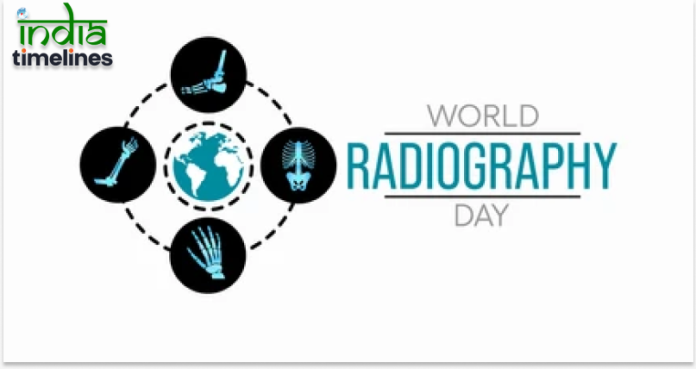
World Radiography Day is observed annually on November 8th to celebrate the discovery of X-rays by Wilhelm Conrad Roentgen in 1895. It’s a day to recognize the importance of radiography in healthcare and the essential work of radiographers who operate diagnostic imaging technologies. In 2024, the significance of World Radiography Day continues to grow as radiography plays a vital role in advancing medical care, improving diagnostics, and saving lives worldwide.
The History of World Radiography Day
The roots of World Radiography Day trace back to November 8, 1895, when Wilhelm Conrad Roentgen, a German physicist, discovered X-rays. This breakthrough revolutionized medical diagnostics by allowing physicians to see inside the human body without invasive surgery. Roentgen’s discovery earned him the first Nobel Prize in Physics in 1901, and since then, X-rays have become a cornerstone of modern medicine.
World Radiography Day was established to commemorate Roentgen’s achievement and to celebrate the ongoing advancements in radiography that continue to improve patient care. It’s a global event aimed at raising awareness about the vital role radiography plays in healthcare, and 2024 will be no exception.
Importance of Radiography in 2024
In 2024, radiography remains a cornerstone of modern healthcare. The field has evolved dramatically since Roentgen’s discovery, with cutting-edge technology allowing for more precise and detailed medical imaging. From basic X-rays to advanced techniques like CT scans, MRIs, and PET scans, radiography has become indispensable in diagnosing a wide range of conditions, from broken bones to cancer.
Radiography has also become more patient-friendly, with faster imaging times, lower radiation exposure, and improved image clarity. The significance of radiography in 2024 cannot be overstated, as it continues to provide critical insights into patients’ health and contribute to life-saving treatments.
The Role of Radiographers
Radiographers are highly skilled healthcare professionals responsible for performing diagnostic imaging procedures. They operate complex equipment, ensure patient safety, and assist physicians in interpreting images to diagnose illnesses and injuries. Radiographers are often the first to detect abnormalities in patients, making their role crucial in the healthcare journey.
In 2024, radiographers are not only technicians but also experts in patient care. They ensure that imaging procedures are performed safely and effectively, minimizing patient discomfort and exposure to radiation. Radiographers are indispensable members of healthcare teams, working alongside doctors, nurses, and other specialists to provide comprehensive care.
Radiography and Healthcare Innovation
The past decade has seen incredible technological advancements in radiography, and 2024 is no different. Digital imaging has largely replaced traditional film, providing clearer images and faster results. Artificial intelligence (AI) is increasingly being integrated into radiography, helping radiographers and doctors analyze images more quickly and accurately.
AI algorithms can detect patterns in medical images that may be missed by the human eye, enhancing the accuracy of diagnoses. As AI continues to evolve, it will likely play an even larger role in radiography, streamlining the diagnostic process and improving patient outcomes.
Radiography’s Contribution to Early Diagnosis
Early detection of diseases can be life-saving, and radiography is at the forefront of this effort. Imaging technologies allow doctors to detect conditions such as cancer, heart disease, and bone fractures in their early stages, when treatment is most effective. For example, mammograms, a type of radiography, have significantly reduced breast cancer mortality by enabling early detection.
In 2024, radiography continues to contribute to early diagnosis across a wide range of medical conditions. The ability to see inside the body without invasive procedures allows for faster diagnoses and more personalized treatment plans, ultimately improving patient survival rates.
The Importance of Patient Safety in Radiography
While radiography uses radiation, patient safety is always a top priority. Advances in technology have significantly reduced radiation exposure during imaging procedures. Modern radiography equipment is designed to use the lowest possible dose of radiation while still producing high-quality images.
Radiographers are trained to follow strict safety protocols to protect both patients and themselves from unnecessary exposure. In 2024, the focus on safety remains strong, with continuous improvements in imaging technology ensuring that radiography is as safe as possible.
Celebrating Radiographers on World Radiography Day 2024
World Radiography Day is a time to celebrate the dedication and expertise of radiographers. Around the globe, hospitals, medical schools, and radiology departments will host events, workshops, and public awareness campaigns to highlight the essential work radiographers do. In 2024, many of these events will focus on the future of radiography and the importance of continuing education and technological advancements.
Radiographers play a critical role in patient care, and World Radiography Day is an opportunity to recognize their contributions to healthcare. Whether they are working in hospitals, clinics, or specialized imaging centers, radiographers help save lives every day.
Challenges in Radiography
Despite the critical role radiography plays in healthcare, the profession faces challenges. One of the main issues is the global shortage of trained radiographers. As demand for diagnostic imaging grows, there is an increasing need for more professionals to enter the field.
Technological challenges also exist, particularly in keeping up with the rapid pace of advancements in medical imaging. Radiographers must continuously update their skills to stay current with new imaging techniques, safety protocols, and AI-based tools.
Future of Radiography
The future of radiography is bright, with ongoing innovations poised to further revolutionize the field. AI, machine learning, and 3D imaging are set to play an even more significant role in diagnostics. Automated image analysis will assist radiographers in identifying diseases with greater speed and precision, leading to faster treatment decisions.
Additionally, advancements in portable imaging equipment will make it easier to provide diagnostic services in remote or underserved areas. As radiography continues to evolve, the field will become even more integral to modern healthcare.
Global Outreach and Education
One of the key goals of World Radiography Day is to raise awareness about the importance of radiography and the need for more trained professionals. In 2024, educational initiatives will focus on attracting new talent to the field, particularly in countries where there is a shortage of radiographers.
Training programs and workshops will also emphasize the latest advancements in radiography, ensuring that current professionals are equipped with the knowledge and skills to keep up with technological changes.
Radiography Beyond Medicine
Radiography isn’t limited to the medical field. It has numerous applications in other industries, including:
- Industrial Radiography: Used to inspect materials and structures, such as pipelines, bridges, and buildings, for defects without causing damage.
- Security: X-rays are used in airports and other high-security environments to scan luggage and detect hidden objects.
- Engineering: Radiography is used to examine the internal structure of materials and ensure quality control in manufacturing.
How to Become a Radiographer in 2024
Becoming a radiographer requires specialized education and training. In 2024, aspiring radiographers typically need to complete a degree in radiography or medical imaging, followed by clinical training. Many countries also require radiographers to obtain a license or certification before they can practice.
The demand for radiographers is high, making it a promising career path. Radiographers enjoy job stability, competitive salaries, and opportunities for professional growth in a rapidly advancing field.
Why World Radiography Day Matters in 2024
World Radiography Day is more than just a celebration of technological achievements. It’s an opportunity to raise awareness about the importance of radiography in healthcare and recognize the professionals who make it all possible. As medical imaging continues to evolve, World Radiography Day will play a crucial role in promoting the field and encouraging future advancements.
Conclusion
Radiography has come a long way since Wilhelm Roentgen’s discovery of X-rays in 1895. In 2024, radiography remains at the forefront of medical innovation, providing invaluable insights into the human body and helping doctors diagnose and treat diseases more effectively. As we celebrate World Radiography Day, it’s essential to recognize the contributions of radiographers and look forward to the future of this dynamic and ever-evolving field.
FAQs
- What is World Radiography Day?
World Radiography Day is celebrated on November 8th each year to commemorate the discovery of X-rays by Wilhelm Roentgen in 1895. - Why is radiography important in healthcare?
Radiography plays a critical role in diagnosing a wide range of medical conditions, from broken bones to cancers, by providing non-invasive images of the inside of the body. - What technological advancements are shaping radiography in 2024?
AI, machine learning, and 3D imaging are some of the most significant advancements shaping radiography today, improving the speed and accuracy of diagnoses. - What are the main challenges facing radiography?
The global shortage of radiographers and the need to keep up with rapid technological advancements are among the main challenges the profession faces. - Can radiography be used outside of medicine?
Yes, radiography is also used in industries such as security, engineering, and manufacturing to inspect materials and ensure safety.




































Attractive section of content I just stumbled upon your blog and in accession capital to assert that I get actually enjoyed account your blog posts Anyway I will be subscribing to your augment and even I achievement you access consistently fast